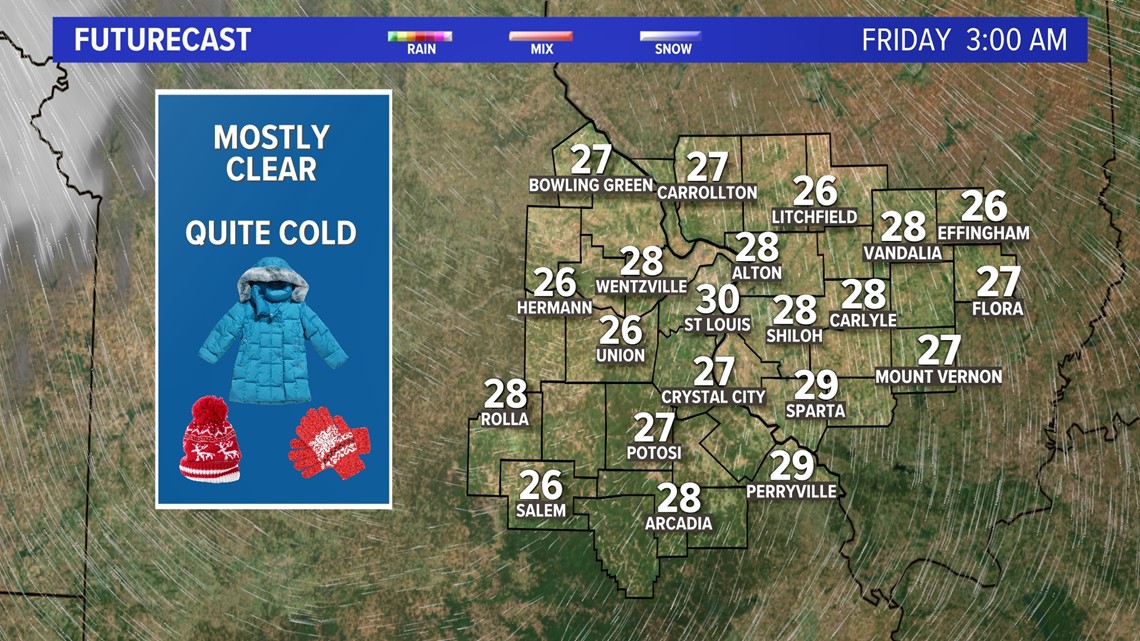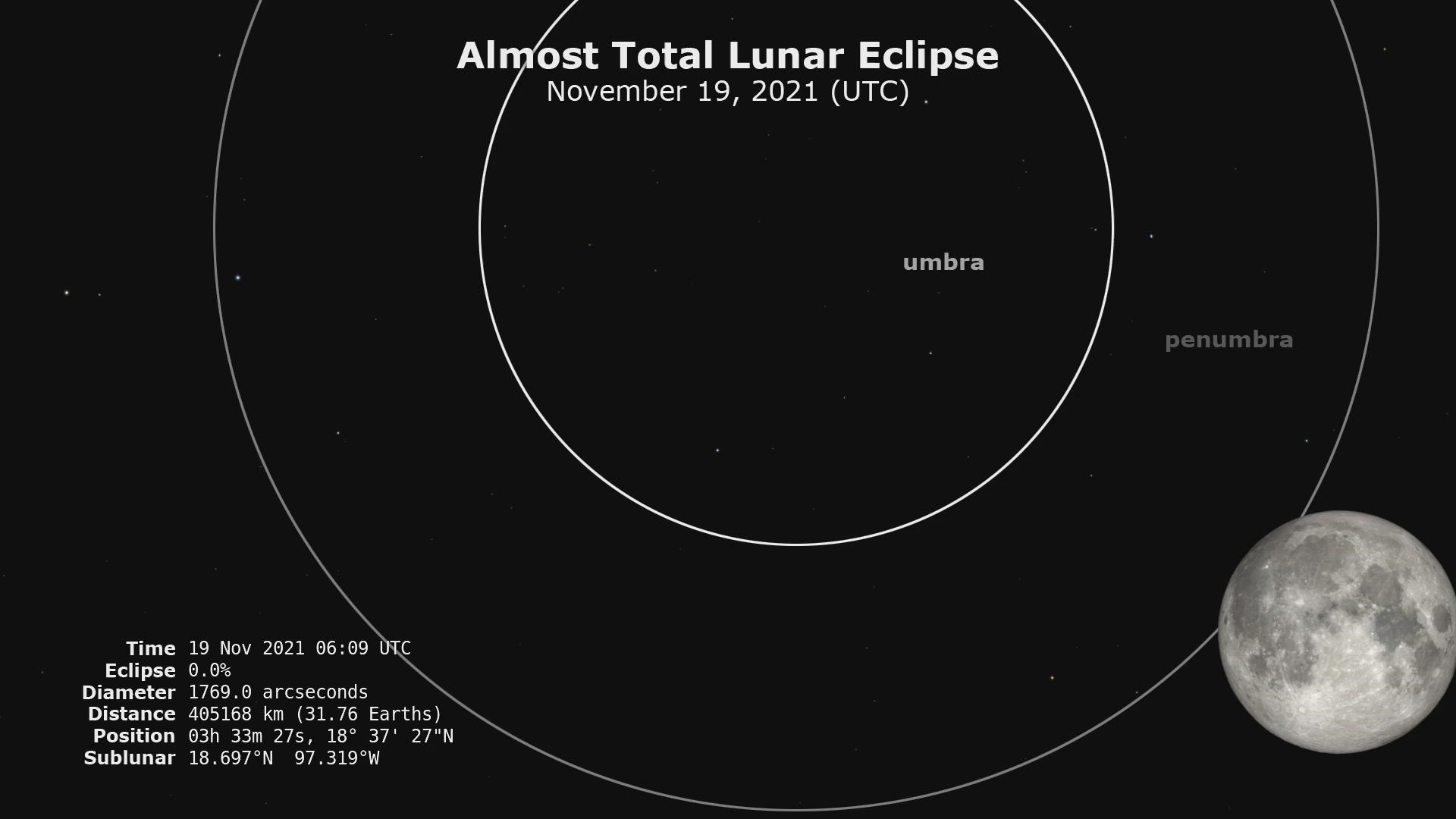ST. LOUIS — Early Friday morning, the full Beaver Moon passes into the shadow of the Earth, creating an "almost" total lunar eclipse with 99.1% of the Moon's disk in the Earth's umbra or deep shadow.
That moment of greatest eclipse occurs at around 3:03 a.m. Central Standard Time, Friday morning.
The eclipse is visible in all of North America, weather permitting. Our weather forecast is for a mostly clear sky although clouds will be on the increase after the peak of the eclipse.
You will find this celestial event in the fairly low in the western sky early Friday morning.
Only the southern tip of the moon will be illuminated around 3 a.m. when the peak of the eclipse occurs. By 4:45 a.m, there will be little left to be seen.


There are two phases of the Earth's shadow that the moon will travel through. The penumbra is the part of the Earth's shadow where the Sun is only partially covered by the Earth. The umbra is where the Sun is completely hidden.
As the Moon enters and moves through the penumbra, there isn't much to see. When the Moon enters the umbra, the show begins! That's when the Moon starts to disappear. It enters the umbra at about 1:20 a.m. St. Louis time. About an hour later, the part of the Moon still in sunlight will be small enough to notice the coppery color of the part of the Moon within the umbra.
This is the longest lunar eclipse in 580 years and the longest this century at 3 hours, 28 minutes and 23 seconds.

